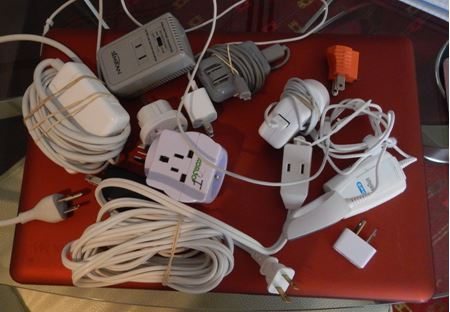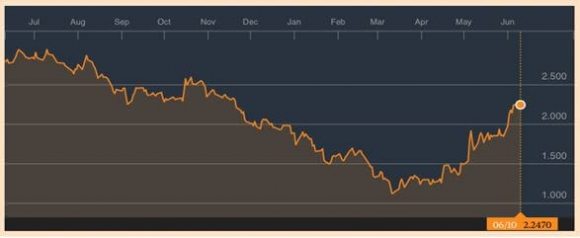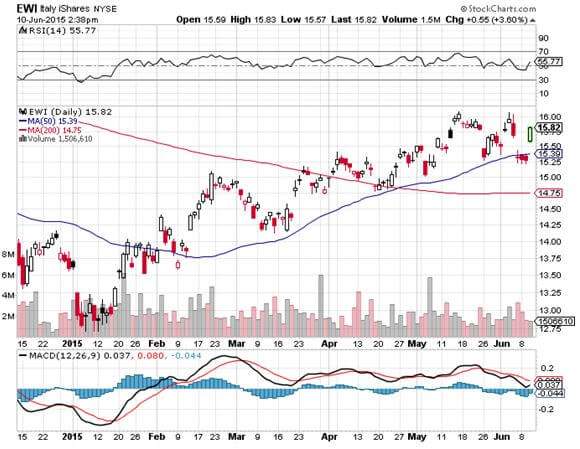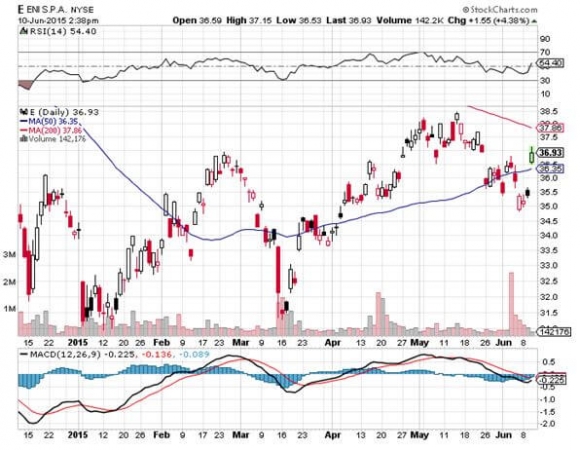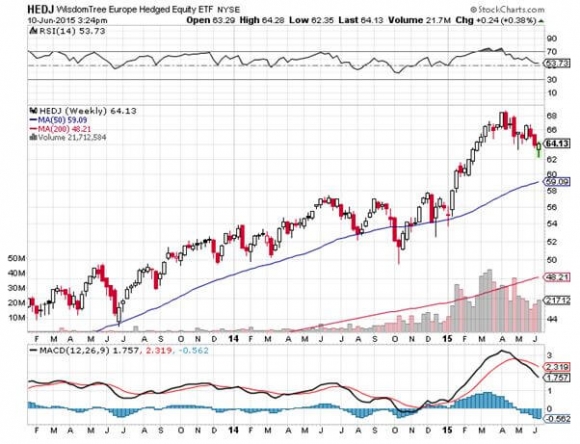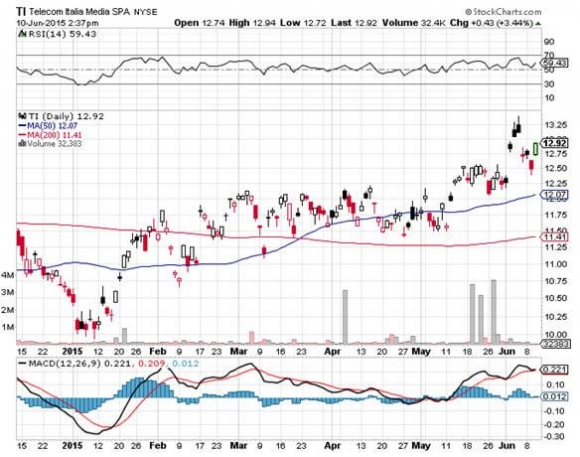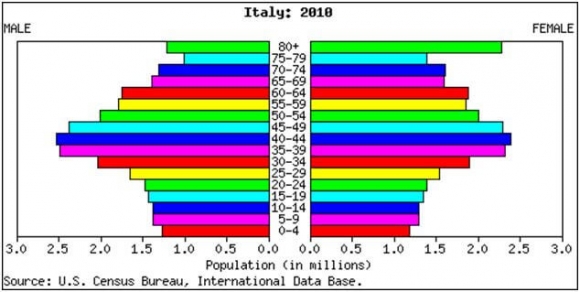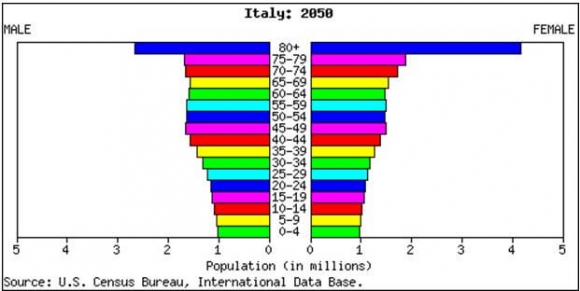Global Market Comments
June 17, 2015
Fiat Lux
(TAKING OFF FOR EUROPE AND AFRICA)
Terrorist attacks, mass beheadings, and crashing airlines all spell one thing to me.
Travel bargains!
Of course, my first choice for a vacation destination this year was the civil war in Syria so I could find out on the ground what is really happening there. In addition, I could shop for a refugee camp in Jordan for one of my non-profits to help support.
Unfortunately, my family was not too hot on this idea, not wishing to buy me back from kidnappers at an inflated price, again (the last time was Cambodia in 1976).
The Joint Chiefs were not too thrilled either. At my advanced aged, I simply know too much to fall into the wrong hands.
So I compromised. This summer will find me trekking across the Sahara desert on a camel along the Moroccan/Algerian border, not far from Mauritania, where temperatures can reach 135 degrees Fahrenheit. I?m bringing my sunscreen.
My tux and white dinner jacket are packed, the five star hotels are booked, and the limo is waiting outside. The Cessna is fully fueled and the flight plan filed. I am taking off for my annual European and African Strategy Luncheon Tour.
I have worked the hardest in my life the past year, and it is time for a break. I have also put myself through the most grueling training regimen, hiking 2,000 miles and snowshoeing another 600, all with a 60-pound pack.
Every year it seems to get harder to keep the calendar at bay.
Along the way I will be meeting with other hedge fund managers, senior government officials, CEO?s at major banks and Fortune 500 companies, large institutional investors, and a Nobel Prize winner or two.
Getting out into the real world and soaking up new data and opinions is invaluable in shaping my own global view, and your performance benefits from it. Since I don?t stumble across these people in my living room, I have to travel the world to seek them out.
After pit stops in Dallas, DC and New York, I?ll board the Cunard Line?s Queen Mary II at the Brooklyn Cruise Terminal to take residence in the owner?s suite.
As we pass over the wreck of the Titanic on the second day out, we?ll throw a bouquet of flowers as a mark of respect.
In London I?ll catch William Shakespeare?s King John at the Globe Theater (click here).
I?ll spend an evening at the Royal Ballet (click here), and visit the Royal Academy of Arts Summer Exhibition.
At least one morning will find me catching an old-fashioned straight razor shave at the Jermyn Street Barbers, and topping up my supply of business shirts at Turnbull & Asser.
The cheese trolley at the Michelin restaurant is to die for. For accommodations I?ll be staying at the ever reliable, if not Spartan, British Navy Officers Club. You know, the place where Horatio Nelson used to drink with his junior officers?
I?ll then board the Orient Express for Venice, where the dinner is black tie only. Hopefully, there won?t be any murders this time. If a new Brioni suit and pair of Gucci shoes throw themselves upon me while I stroll through the Galleria in Milan I may be unable to resist.
In Geneva I?ll be consulting with the representatives of several Middle Eastern royal families while they vacation in the Alps.
One afternoon will be devoted to taking the paddle wheel steamer on Lake Geneva to the Chateau de Chillon in Montreux where Lord Byron used to live, sipping fine Swiss white wines along the way.
The grand finale will be my annual assault on the Matterhorn at Zermatt, which at 14,692 feet, is higher than anything we have in the continental US. After training all year for this, it?s now or never.
I spend my evenings there at public steam baths where, afterwards, I roll around in the snow and beat myself with birch branches. It is invigorating, to say the least.
I will be traveling with my laptop and keeping in touch with the markets. While 18th century Internet service is passable, the bandwidth can be snail like. So unless I see something extraordinary, I will cut back on new Trade Alerts.
After running up a 175% return in four and a half years, and beating 99% of the hedge funds in the industry, I deserve a break. I need to spend some time alone on a mountaintop, communing with the spirits, attempting to discover the new long-term market trends through the mist.
While on the road, I will continue writing my newsletter, giving you my daily dose of market insight. I will also be re-running some of my favorite research pieces from the past when my travel schedule does not allow Internet access.
This is to expose my thousands on new subscribers to the golden oldies, and to remind the legacy readers who have since forgotten them.
I will be back in San Francisco in early August, glued to my screens once again for another year of toil. In the meantime, please feel free to email me.
Mad Day Trader, Bill Davis, will be working straight through the summer. No rest for the wicked!
In the meantime, I shall be raising a glass to all of you at dinner, the loyal readers of The Diary of a Mad Hedge Fund Trader. Salute! Prost! And Cheers! Thanks for making this letter a huge success!
If you want to take the opportunity to meet me in person, please find my strategy luncheon schedule below. To purchase tickets for the luncheons, please go to my online store click on city of your choice.
Dallas, Texas - June 19
Washington DC - June 22
New York City - June 25
London, England - June 29
Lisbon, Portugal - July 2
Marrakesh, Morocco - July 13
Milan, Italy - July 22
Zermatt, Switzerland - July 31
Zurich, Switzerland - August 3
 I?ll Meet You on Top
I?ll Meet You on Top
 My Plug Adaptors Are Ready to Go
My Plug Adaptors Are Ready to Go
Global Market Comments
June 16, 2015
Fiat Lux
Featured Trade:
(LAST CHANCE TO ATTEND THE JUNE 19 DALLAS, TEXAS GLOBAL STRATEGY LUNCHEON),
(MAD HEDGE FUND TRADER HITS 26% GAIN IN 2015),
(SPY), (AAPL), (GS), (FCX),
?(PANW), (GILD), (FXE), (EUO)
(THE COST OF AN AGING WORLD),
(EWJ), (EWI), (EWG), (EWQ), (EWL), (EWU), (PIN),
(TESTIMONIAL)
SPDR S&P 500 ETF (SPY)
Apple Inc. (AAPL)
The Goldman Sachs Group, Inc. (GS)
Freeport-McMoRan Inc. (FCX)
Palo Alto Networks, Inc. (PANW)
Gilead Sciences Inc. (GILD)
CurrencyShares Euro ETF (FXE)
ProShares UltraShort Euro (EUO)
iShares MSCI Japan (EWJ)
iShares MSCI Italy Capped (EWI)
iShares MSCI Germany (EWG)
iShares MSCI France (EWQ)
iShares MSCI Switzerland Capped (EWL)
iShares MSCI United Kingdom (EWU)
PowerShares India ETF (PIN)
Come join me at the Mad Hedge Fund Trader?s Global Strategy luncheon, which I will be conducting in Dallas, Texas at 12:00 PM on Friday, June 19, 2015.
The guests and I will engage in an open discussion on the crucial issues facing investors today.
I?ll be giving you my up to date view on stocks, bonds, foreign currencies, commodities, precious metals, and real estate. And to keep you in suspense, I?ll be throwing a few surprises out there too.
Enough charts, tables, graphs, and statistics will be thrown at you to keep your ears ringing for a week. Tickets are available for $255.
I?ll be arriving early and leaving late in case anyone wants to have a one on one discussion, or just sit around and chew the fat about the financial markets.
The event will be held at an exclusive downtown Dallas Club. The details will be emailed directly to you with your confirmation.
I haven?t had any family in the neighborhood since the Comanche Indians kidnapped an ancestor in 1842. When they sold him back to the Texas Rangers for $300 two years later, he hightailed it back to St. Louis.
History Buffs will enjoy the Dallas Heritage Village at Old City Park. Their next stop should be The Old Red Museum of Dallas County, which is chock full of local history. Presidential historians can also visit the George W. Bush Presidential Museum.
The favorite sons of Dallas certainly have their creative streak. Here were invented liquid paper, the Slurpee, the integrated circuit, the corn dog, and the first ever professional baseball team.
I look forward to meeting you, and thank you for supporting my research.
To purchase tickets for the luncheons, please go to my online store.
I am sitting here typing away at the picnic table atop Grizzly Peak in Berkeley, California.
The sun is setting into an ochre Pacific in the West. A massive blanket of fog is silently rolling in from the sea, covering the compact city of San Francisco.
Only the twin towers of the Golden Gate Bridge, the pyramidal Transamerica Building, and Sutro Tower are poking out through the top of the mist.
Life is good.
It has been pretty prosperous time for followers of the Mad Hedge Fund Trader?s trade alert service as well.
I started out 2015 with the goal of earning 25% for my readers during the first half, and another 25% in the second half.
I just ran the numbers, and we are up a welcome 26% so far this year, posting a 3% gain in June alone. Every month this year has been in the green. In fact, the performance has gone up almost every day since January 6.
Under promise and over deliver; it has always been a winning business strategy.
Since inception four and a half years ago, the total return has been a meteoric 179%, a new all time high.
This is against a backdrop of major market indexes that are nearly unchanged so far this year, despite all the volatility.
The key to winning this year has been to put the pedal to the mettle during those brief, but hair raising selloffs, and then take quick profits. They don?t call me ?Mad? for nothing.
When the market is dead, you sit on your hands.
After all, you are trying to pay for your own yacht, not your broker?s.
This approach had me 100% invested in April, but only 30% in the game right now. Two of my remaining positions, long and short positions in the S&P 500 options (SPY), expire on Friday, June 19.
The only holding I will maintain after that will be my short in the Japanese yen (FXY), one of the surest bets out there. And that position only extends out to the July 17 expiration.
When the market pays you to stay away, you stay away.
I managed to nail the collapse in the euro (FXE), (EUO) big time, taking advantage of central bank monetary policies that are heading completely in opposite directions in the US and Europe.
I then executed a tactical long, caught the dead cat bounce, and then went short again. The morons in Brussels and Athens promise to deliver us a steady diet of volatility for the rest of the year. Think of it as the gift that keeps on giving.
Those who have made the effort to wake up early every morning and read my witty and incisive prose have an impressive row of notches on their bedpost to show for their effort.
The list includes Apple (AAPL), Goldman Sachs (GS), Freeport McMoRan (FCX), Palo Alto Networks (PANW), Solar City (SCTY), and Gilead Science (GILD).
My groundbreaking trade mentoring service was first launched in 2010. Thousands of followers now earn a full time living solely from my Trade Alerts, a development of which I am immensely proud.
Some 50% of my clients are over 50 and managing their own retirement funds fleeing the shoddy but expensive services provided by Wall Street. The balance are institutional investors, hedge funds, and professional financial advisors.
The Mad Hedge Fund Trader seeks to level the playing field for the average Joe. Looking at the testimonials that come in every day, I?d say we?ve accomplished that goal.
It has all been a vindication of the trading and investment strategy that I have been preaching to followers for the past eight years.
Quite a few followers were able to move fast enough to cash in on my trading recommendations. To read the plaudits yourself, please go to my testimonials page by clicking here.
Watch this space, because the crack team at Mad Hedge Fund Trader has more new products and services cooking in the oven. You?ll hear about them as soon as they are out of beta testing.
Our business is booming, so I am plowing profits back in to enhance our added value for you.
The coming year promises to deliver a harvest of new trading opportunities. The big driver will be a global synchronized recovery that promises to drive markets into the stratosphere by the end of 2015.
Global Trading Dispatch, my highly innovative and successful trade-mentoring program, earned a net return for readers of 40.17% in 2011, 14.87% in 2012, 67.45% in 2013, and 30.3% in 2014.
Our flagship product,?Mad Hedge Fund Trader PRO, costs $4,500 a year. It includes?Global Trading Dispatch?(my trade alert service and daily newsletter).
You get a real-time trading portfolio, an enormous research database, and live biweekly strategy webinars. You also get Bill Davis?s Mad Day Trader service, which provides great intra day market color.
To subscribe, please go to my website, ?www.madhedgefundtrader.com, click on the ?Memberships? located on the second row of tabs.
And now for the second half. I can?t wait!
Global Market Comments
June 15, 2015
Fiat Lux
Featured Trade:
(BILL DAVIS TAKES OVER THE MAD DAY TRADER),
(JUNE 25 NEW YORK STRATEGY LUNCHEON),
(ONSHORING TAKES ANOTHER GREAT LEAP FORWARD),
(TSLA), (UMX), (EWW)
Tesla Motors, Inc. (TSLA)
ProShares Ultra MSCI Mexico Capped IMI (UMX) ?
iShares MSCI Mexico Capped (EWW)
All good things must come to an end, and Mad Day Trader Jim Parker has decided to move on with his career elsewhere. We wish him the best of luck in his new endeavors.
Fortunately, my long time friend and colleague, Bill Davis, has agreed to take over the Mad Day Trader service starting from today.
Those who attended the June 10 Global Strategy Webinar have already met Bill as my guest host. If you missed that presentation, you can listen to the recording by clicking the link: https://www.madhedgefundtrader.com/webinars/.
The only requirement for listening is that you can understand people from New Jersey, a challenge not all Americans can meet, even those from New Jersey.
In order for all of you to get to know Bill Davis, all subscribers of every level are invited to listen in on his own webinar this coming Wednesday, June 17 at 12:000 EST. This will continue on a biweekly basis, as in the past.
We are blessed to gain access to Bill Davis?s talent and skills.
He graduated from Lehigh University in 1978 with a BS in business, with a major in accounting. Bill opened his first brokerage account shortly thereafter.
During the distant 1980?s, Bill began trading stock options, turning an initial $19,000 grubstake into just over $50,000 in about four months. When the ensuing summer correction hit, the account took a hit, but Bill was hooked on trading. This began a lifelong pursuit of trading education that continues to this day.
Since 2010, Bill has been training others to trade using his proprietary methods and has developed a real passion for helping others.
We are lucky to have him on our team and to gain access to his experience, knowledge, and expertise. Bill is devoted to helping traders of all levels.
While Global Trading Dispatch focuses on investment over a one week to six-month time frame, Mad Day Trader will exploit money-making opportunities over a brief ten minute to three day window. It is ideally suited for day traders, but can also be used by long-term investors to improve market timing for entry and exit points.
Mad Day Trader uses a variety of technical and fundamental indicators to determine when to enter and exit a market. In addition, specific support and resistance areas for the major markets are continually evaluated to help determine if and when a market should be entered or if it more prudent to stay on the sideline.
Specific Trade Alerts will be sent to you by email for immediate execution. Market conditions will dictate the volume of trade recommendations.
As with our existing service, you will receive ticker symbols, entry and exit points, targets, stop losses, and regular real time updates. At the end of each day, a separate short-term model portfolio will be posted on the website.
I only engaged Bill?s services because I am absolutely convinced that he will do a great job enhancing your understanding of the markets, as well as your own trading performance. We are happy to have him as a new addition to our team.
He will introduce a new service that will focus on weekly expiring options, where the profit opportunities are huge and asymmetrical. Consider it a free upgrade.
Good luck and good trading.
Fiat Lux
John Thomas
Global Market Comments
June 12, 2015
Fiat Lux
Featured Trade:
(JULY 31 ZERMATT, SWITZERLAND GLOBAL STRATEGY SEMINAR)
(MY OLD PAL, LEONARDO FIBONACCI),
(TESTIMONIAL)
Global Market Comments
June 11, 2015
Fiat Lux
SPECIAL ITALIAN ISSUE
Featured Trade:
(JUNE 29 LONDON STRATEGY LUNCHEON)
(WHAT TO DO ABOUT ITALY?),
(EWI), (HEDJ), (TI), (E), (FXE), (EUO)
iShares MSCI Italy Capped (EWI)
WisdomTree Europe Hedged Equity ETF (HEDJ)
Telecom Italia S.p.A. (TI)
Eni SpA (E)
CurrencyShares Euro ETF (FXE)
ProShares UltraShort Euro (EUO)
When British Prime Minister, Winston Churchill, was informed that Italy joined the side of the Germans in the Second World War, he infamously replied, "Well, that's only fair. They were our allies in the First World War."
Many investment strategists are similarly vexed today, trying to decide what to do about the home of the Roman Empire.
Since January, the Italy iShares ETF (EWI) has added a blistering 31%, handily beating the Dow, the S&P 500, and yes, even the shares of much worshipped Apple (AAPL).
The land of Cicero, Seneca, and Julius Caesar has produced one of the world's best performing stock markets. The problem is: Now What?
Has the world suddenly fallen in love with pasta, Parmesan, and polenta to deliver such performance? The answer is a little more complicated than that.
First and foremost, you can thank the plunging Euro (FXE), which at one point in April was down 25% year on year. A cheaper Euro makes Italian exports vastly more competitive.
Haven't you noticed the profusion of those cute little Fiat 500s in your neighborhood recently, both the conventional and the all-electric kind? They look like large, wind up toys.
A discount continental currency also sucks in millions more bargain-seeking tourists, the country's largest industry. Count me on the list, who lives in Europe 2-3 months a year.
Italian interest rates have also been a big help. Since the bad old days at the end of 2010, the yield on ten-year Italian government bonds has cratered, falling from 7.2% to 2.25%.
Briefly, in January, they traded as low as an incredible 1.10%. Cheaper money brings lower costs and larger profits for companies south of the Alps.
It also encourages investors to borrow money to buy assets, pushing prices northward. This is all great news for the stock market. Flip the chart of the Italian bond market for the past four years upside down, and you get a chart of the Italian stock market.
Another positive development has been the long awaited departure of bad boy prime minister, Silvio Berlusconi. Voters grew weary of the media magnate's tawdry personal behavior, relations with underage prostitutes, and criminal tax convictions.
The "Bunga Bunga" room, which I drove past on the island of Sardinia last year, is no more. In fact, Berlusconi's palatial estate there is now on the market for a staggering $630 million. Whatever happened to humility? The new, more responsible government has inspired investors to pour even more Euros into Italian shares.
Just looking at the numbers, Italy is not a country where you would rush to pour your entire life savings into. The Economist magazine expects Italy to generate a microscopic 0.6% in economic growth in 2015.
Inflation is at 0.2%. Yet the headline unemployment rate is at a monstrous 12.4%, and the real figure is probably much higher.
Europe's third largest economy disturbingly has a smaller GDP, or gross domestic product, per person than it did in 1999.
Its national debt exceeds a staggering $2.6 trillion, costing it $135 billion a year in interest, or $4,409 a second (click here for this cool Italian National Debt Clock).
Italy is almost in as much trouble as nearly bankrupt Greece.
These numbers are hardly a ringing endorsement for investment.
Italy suffers from two gigantic structural problems.
One is that they're just not making Italians anymore. Each Italian couple is producing only 0.9 children between them.
That compares to 1.9 in the US, and a replacement rate of 2.1. This means the country is suffering from a demographic implosion of biblical proportions.
The population pyramids are going from bad to worse (see below). This predicts that a shrinking young population will have to support an ever growing number of old age pensioners.
Countries with these characteristics have historically suffered from weak economies, falling currencies, burgeoning debt, and are usually terrible investments.
The second is the structural problem has plagued the European Monetary System since its inception. Before the Euro was invented in 1999, a country with a weak economy, like Italy, could simply devalue its way to prosperity.
It could also borrow and spend heavily to reflate the economy, with few consequences.
A lower currency means that its products become cheaper and more competitive in the international marketplace. Italy did exactly that, taking the Lira down from 600 to the dollar when I first visited there in the 1960s, to 1,800 just prior to its entry to the European currency block.
That effectively dropped the cost of anything you bought in Italy by two thirds, which is great for business.
Since then, all of Europe has shared a common currency, the Euro. That means that Italy now shares a currency with Germany, perennially the strongest economy on the continent.
The Germans are only interested in pursuing policies that suit a healthy economy for them. That means no borrowing and keeping a lid on inflation as a top priority.
The devaluation, borrowing, and spending tools have thus been thrown out of the Italian monetary toolbox. So while business is weak, there is not much anyone can do about it. Greece, Spain, and Portugal all face the same dilemma.
The solution to these structural problems would be for Europe to more closely mimic America by creating a true United States of Europe. An empowered and centralized Ministry of Finance would coordinate all continent wide borrowing and spending. The European Central Bank would be given vastly expanded Federal Reserve type powers.
The new agency would issue a single pan European bond, much like the Treasury bonds in the US. As a result, Germany would have to pay slightly higher interests in this brave new world. But the weaker countries would pay much lower interest rates, as the risks for such borrowing would be spread among the Community's 28 members, thus boosting their economies.
The problem is that such ground-breaking reforms would require a far greater level of trust and cooperation than the Europeans have managed until now. It has been 16 years since that last important structural change in Europe. It could take an additional 16 years before we see another big one.
Until then, Italy twists slowly in the wind.
That is, not if the new Italian Prime Minister, Matteo Renzi, has anything to say about it. The mildly socialist Democratic Party's standard bearer has behaved much like a bull in a china shop, proposing desperately needed changes for the economy as fast as his overworked printer can print them.
His goal is to bring Italy into the 21st century, kicking and screaming all the way, and end a half-century of economic torpor.
The 40 year old former mayor of Florence is now the youngest prime minister in history. He is next in line to become the president of the entire European Community. German Chancellor, Angela Merkel refers to him as the "Matador."
Renzi has already implemented important tax reform, cutting the monthly bill for low waged workers by $110 a month. Deregulation is in the air, and Renzi has promised to take the scalpel to the country's notoriously bloated bureaucracy.
It costs an eye popping $150,000 in fees and licenses to open a restaurant in central Rome. That's why your Eggplant Parmesan is so expensive these days. When I first came to the Eternal City 47 years ago, I lived on $2 a day. Now, I can barely scrape by on $2,000. (My tastes have gotten more expensive).
Renzi plans to priv atize many government entities, modernize an arthritic legal system, and bring institutional corruption to an end.
It all reminds me of when Margaret Thatcher was elected PM in 1979 and proceeded to read the riot act to her people for a decade. The London stock market skyrocketed as a result.
If Renzi is successful, the bull market in Italian stocks is not ending, it is just taking a breather before another leg up.
The easiest way to participate in the new bull market is through the iShares Italy ETF (EWI). You could also take rifle shots at single companies, based around your favorite sector call.
Fiat (FIATY.PK) is prospering from the new renaissance in the US car market, where miracle worker, Sergio Marchionne, has engineered a spectacular turnaround at its Chrysler subsidiary.
ENI (E) is a play on the global energy boom. Telecom Italia Media is your classic big cap communications play.
Luxottica Group (LUX) is the world's largest maker of eyeglass frames and gives you participation in a global consumer spending rebound.
ST Microelectronics is headquartered in Switzerland, but has the bulk of its operations in Italy, and is a favored technology bet.
If you do decide to participate in the delights of the Italian stock market, don't forget to hedge out your currency risk, as the Euro is expected to remain weak against the US dollar for years.
Eventual 1:1 parity is not out of the question. You can do this through selling short the Euro (FXE) against your Italian holdings, or via buying the short Euro 2X leveraged ETF (EUO).
Or you can let someone else do all the work for you. The Wisdom Tree Europe Hedged Equity ETF (HEDJ) buys a basket of European stocks, and hedges out the currency risk. It has been a favorite of hedge fund managers for the past year.
It all boils down to whether Italy's new young and wildly ambitious prime minister can deliver on his many promises.
As for me, it's arrivederci for now. The spaghetti carbonara beckons!
 Italian Ten Year Government Bond Yields-1 Year
Italian Ten Year Government Bond Yields-1 Year
 It's All About Renzi
It's All About Renzi
 Ciao, Baby!
Ciao, Baby!
Legal Disclaimer
There is a very high degree of risk involved in trading. Past results are not indicative of future returns. MadHedgeFundTrader.com and all individuals affiliated with this site assume no responsibilities for your trading and investment results. The indicators, strategies, columns, articles and all other features are for educational purposes only and should not be construed as investment advice. Information for futures trading observations are obtained from sources believed to be reliable, but we do not warrant its completeness or accuracy, or warrant any results from the use of the information. Your use of the trading observations is entirely at your own risk and it is your sole responsibility to evaluate the accuracy, completeness and usefulness of the information. You must assess the risk of any trade with your broker and make your own independent decisions regarding any securities mentioned herein. Affiliates of MadHedgeFundTrader.com may have a position or effect transactions in the securities described herein (or options thereon) and/or otherwise employ trading strategies that may be consistent or inconsistent with the provided strategies.

